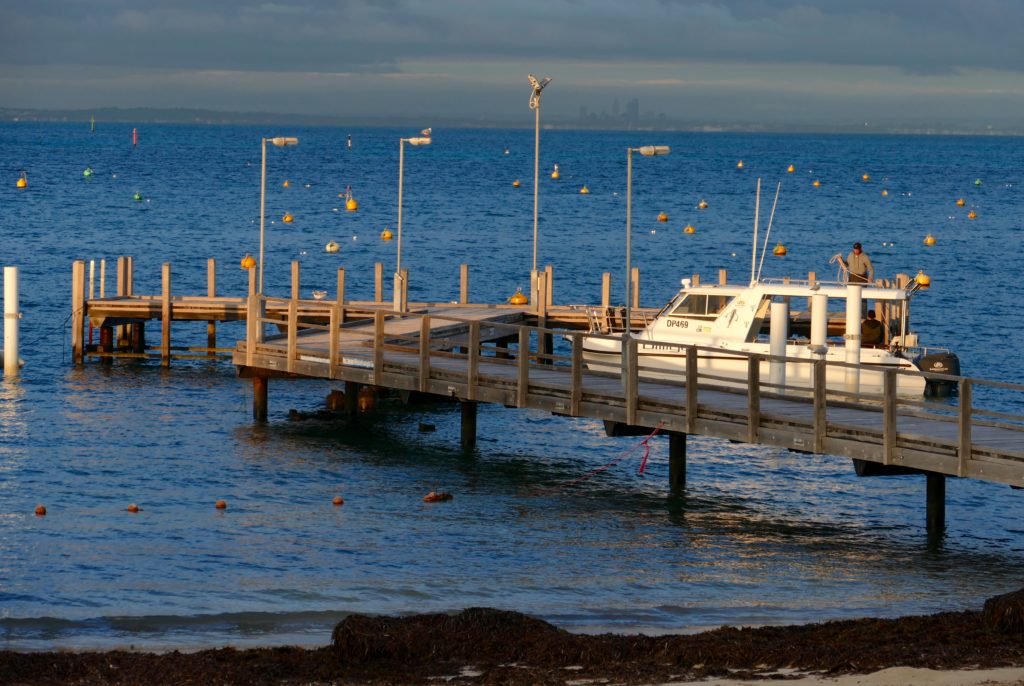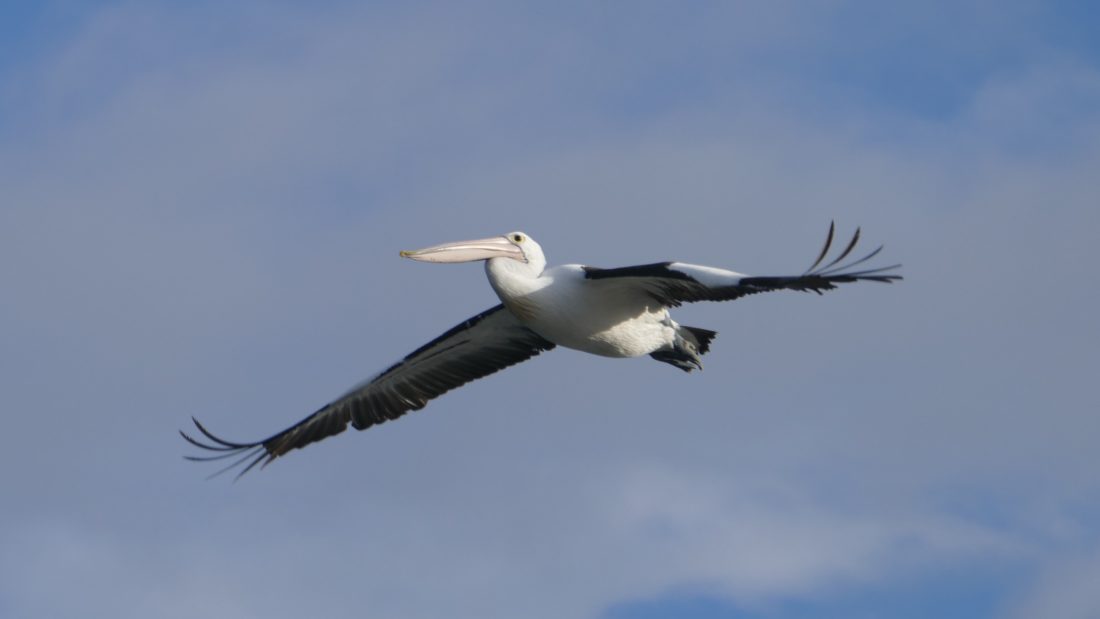This second chapter is a walk on the island’s natural, wild side…although its final destination is the Rottnest Hotel, as MV Dilligaf departs.
The pelican atop this post may – or may not – be the very same one who spent several hours, motionless, on the jetty at Geordie Bay that morning.
In any event, the afternoon’s weather proved kinder, so my beloved and I stirred ourselves.
Both pelican pics here – taken a second or so apart – show the one bird, shortly after it stirred itself, in Bickley Bay.
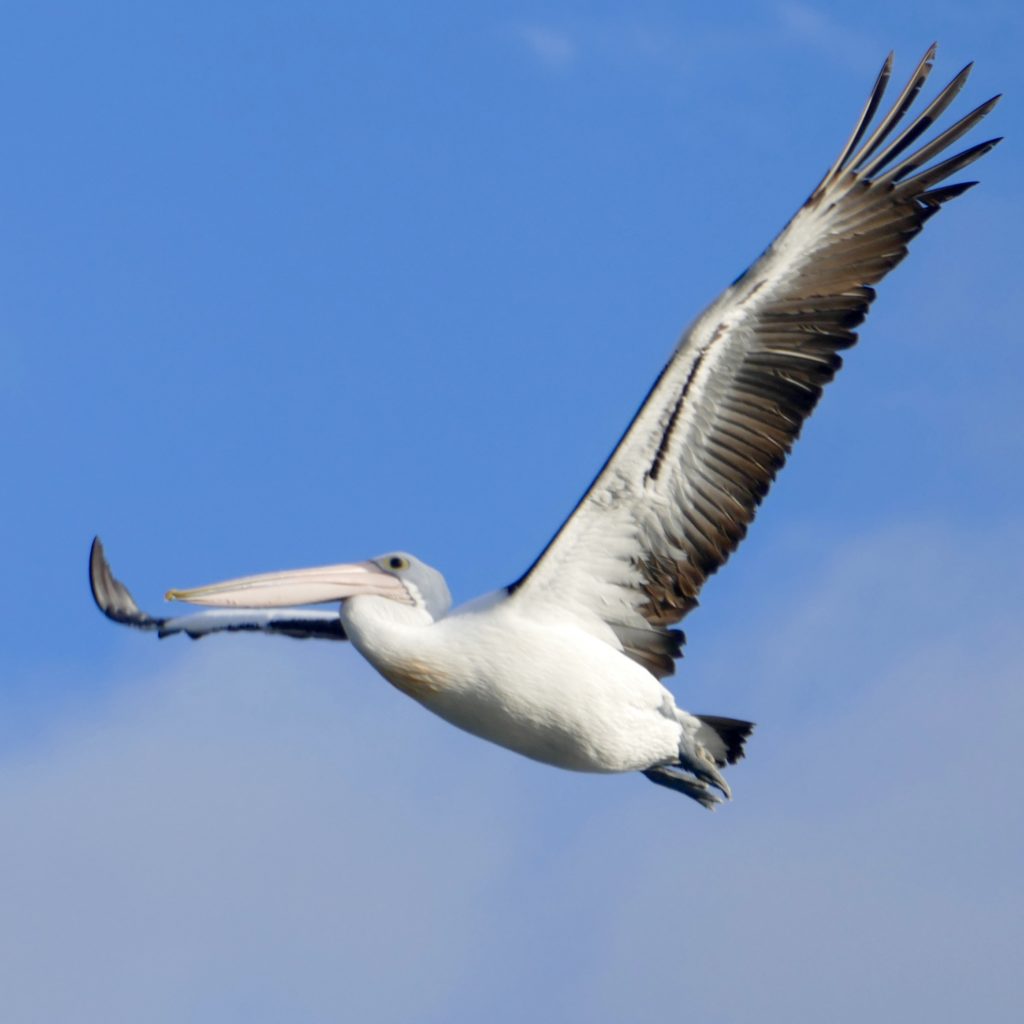
Rottnest is a prime place for ospreys.
All ospreys are the one species and although many humans have never seen one, ospreys are found on all continents, except Antarctica.
This Australian winter, Rottnest has 10 active osprey nests.
This one is at Henrietta Rocks.
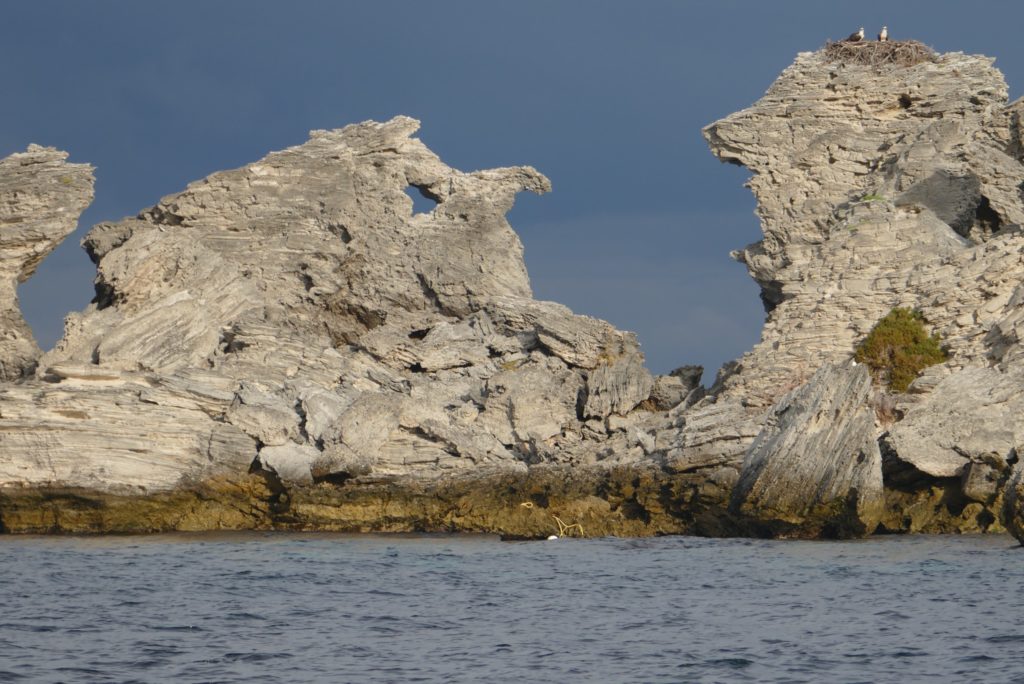
Nearby, on the beach, a pied oystercatcher’s relaxed behaviour suggested that it was well aware that ospreys eat only fish and that tourists don’t hunt oystercatchers.
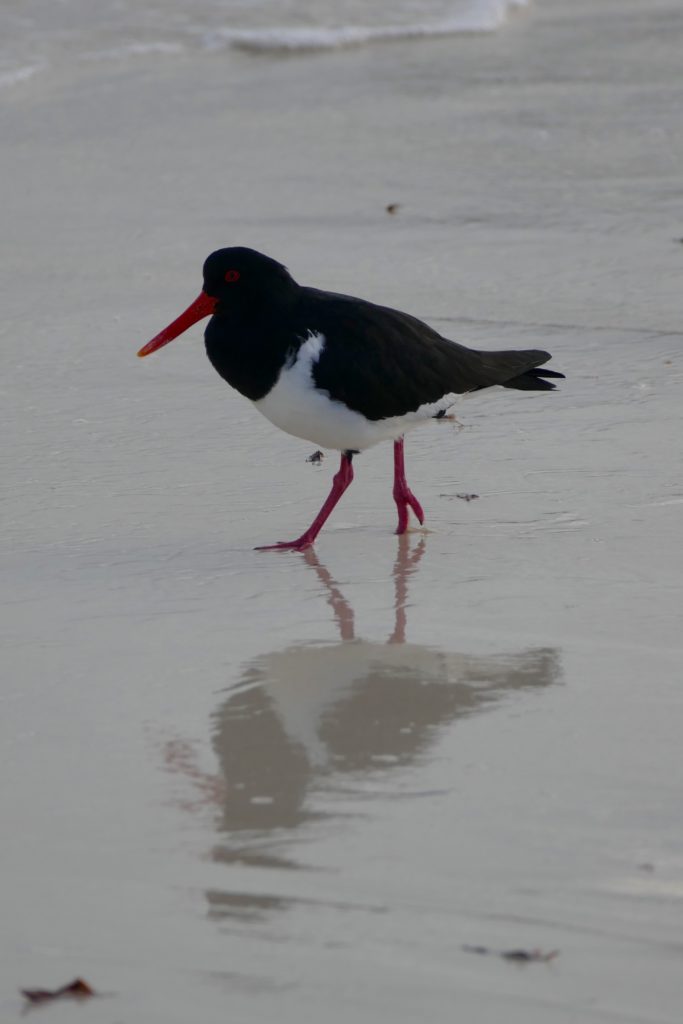
Much of Rottnest’s eastern side is occupied by shallow lakes: some seasonal, some “permanent”, all saline.
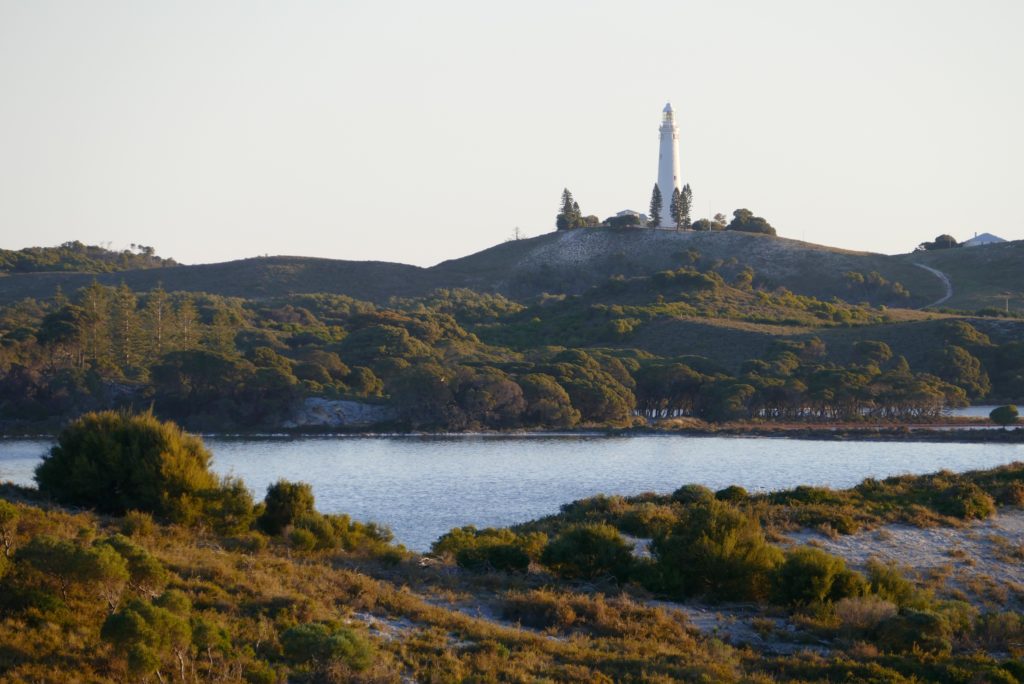
Most rain falls in winter.
Summertime water levels are typically lower and salinity much higher; this promotes the growth of certain algae.
A byproduct is the “pink lake” phenomenon.
Click here for a partial explanation and photos of various pink lakes.
Rotto is currently enjoying a “proper” winter, so the lakes-proper look like “normal” lakes.
Along their shores, however, you can currently experience another natural phenomenon.
It never snows on Rotto and and its lakes are not at all polluted by man-made cleaning products.
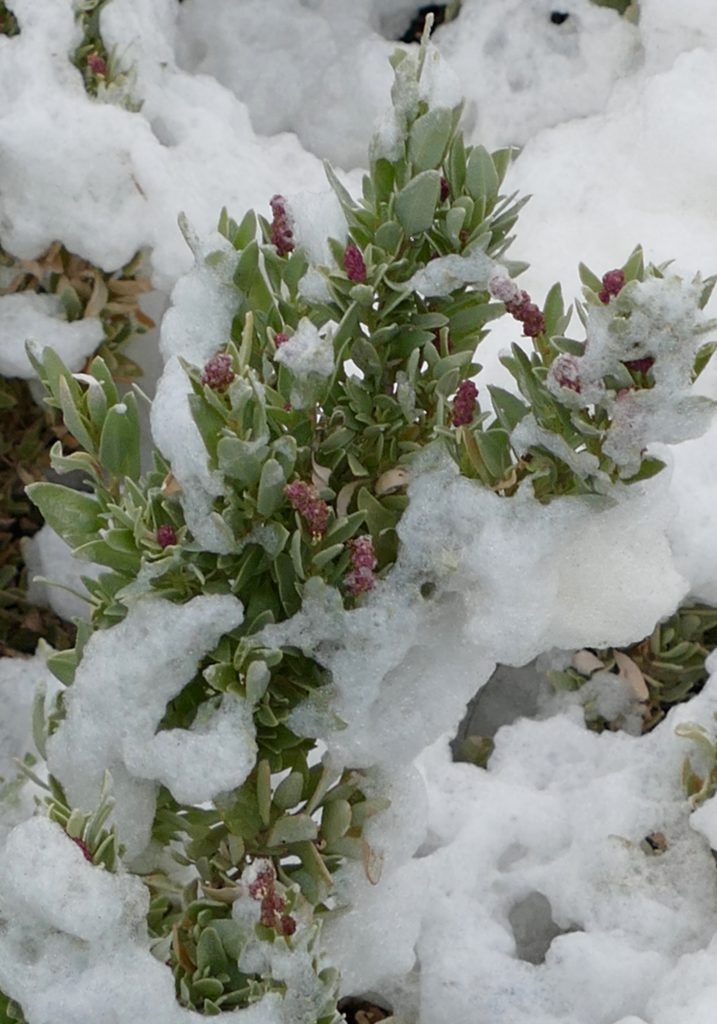
The surfactants responsible are – like the lakes turning “pretty in pink”, most summers – a natural byproduct of the lakes’ rich, organic “soup”.
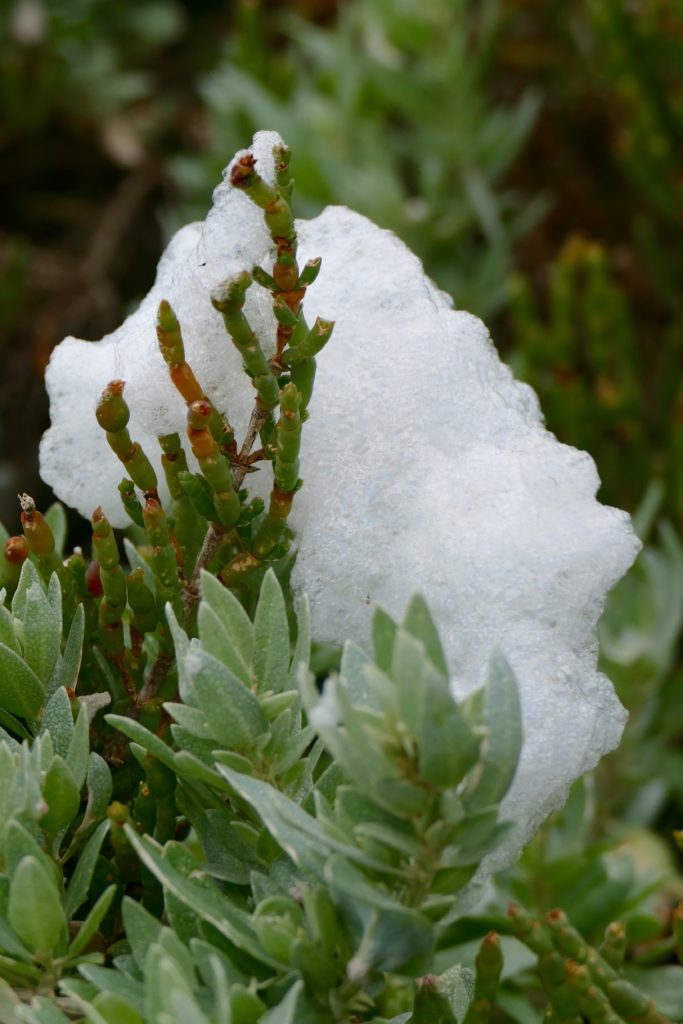
A few minutes after I took the above photos, my beloved and I had one of many meetings with Rotto’s emblematic animal.
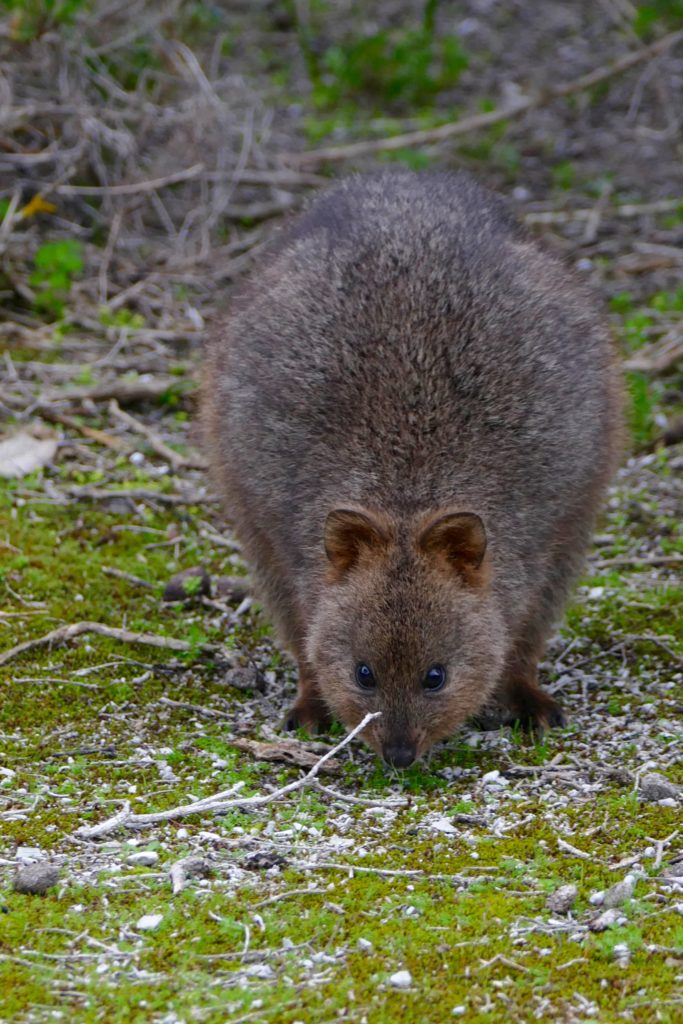
Setonix brachyurus is the only member of its marsupial genus.
Unwittingly, this small wallaby “named” Rottnest.
In 1696 Dutch explorer Willem de Vlamingh landed on the island and mistook the island’s quokkas for rats.
He named the island Rottnest, meaning “rat nest”.
Quokkas live only in southwest Western Australia, but in most places are now entirely absent, or very rare.
Only on Rotto are quokkas abundant.
The island’s western/southwestern half is much the wilder; all tourists and resident humans are accommodated in the eastern/northeastern end.
Porpoise Bay – on the southeast side – is a very short bus trip or an easy bike ride away from Rotto’s modest “bright lights”.
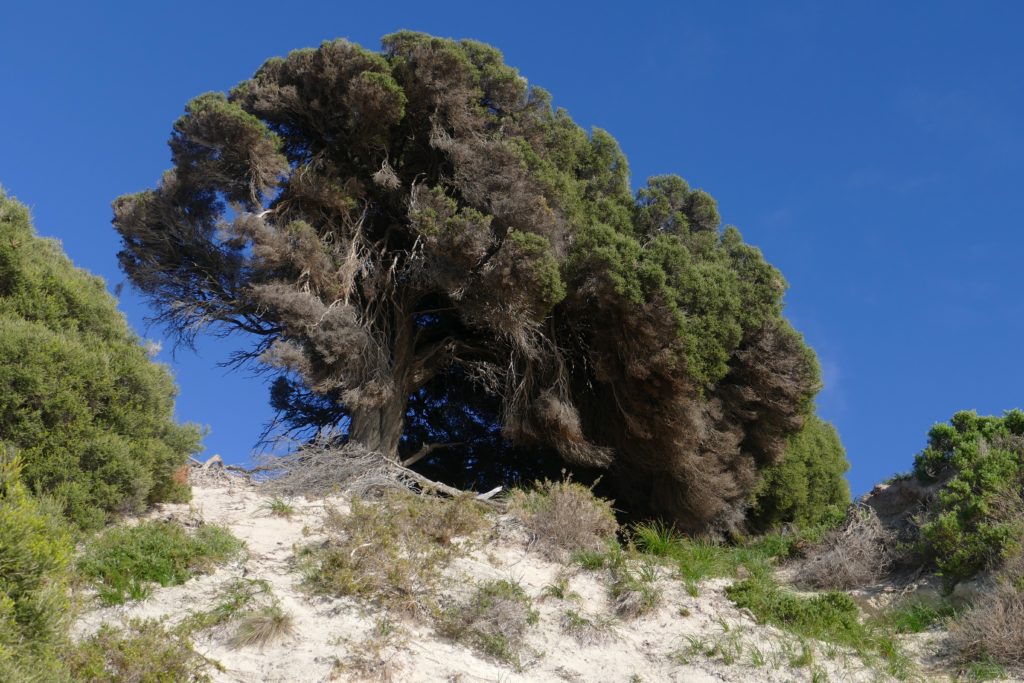
Most of Rotto’s trees are sculpted and pruned by the prevailing winds.
It is always worth looking carefully across the water; on the final of our three Rotto winter mornings we saw a whale (probably, a blue whale – no “tail”, one very big “blow”, then gone) a large pod of dolphins and many birds.
Alas, I lacked the necessary lens “grunt” to do justice to them.
It is also worth looking up.
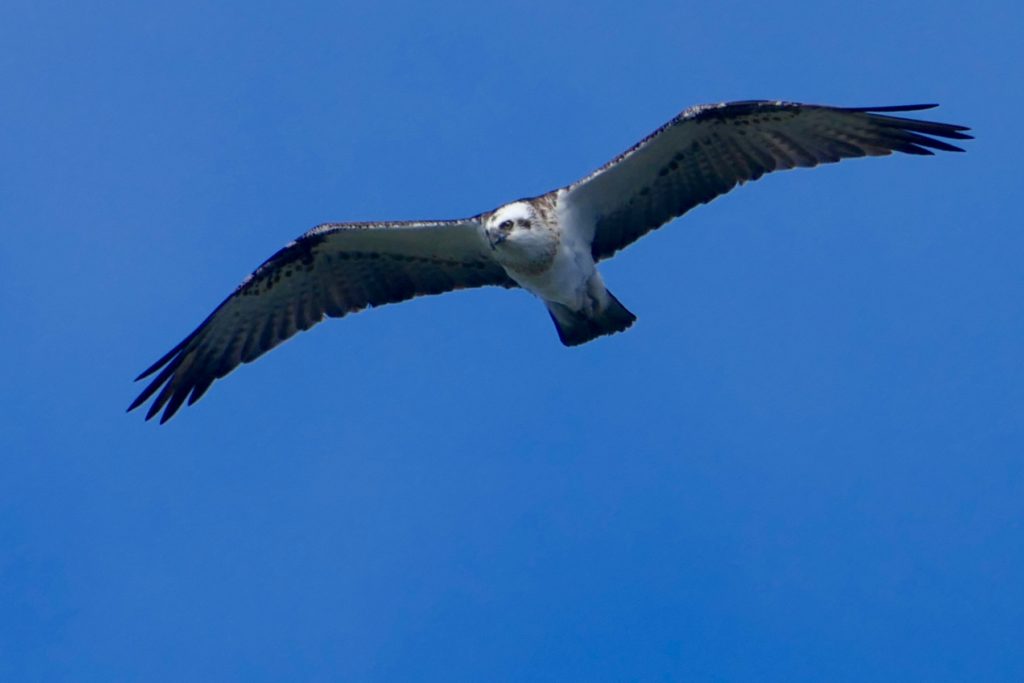
On Rottnest you do not have to be at all “clever” or “expert” to enjoy surprisingly close encounters with ospreys.
(However, it was well within suburban Perth that I enjoyed a much closer, astonishing encounter with an osprey – probably a once-in-my-lifetime experience. That will be subject of a future post)
I suspect that the osprey which flew above us on Porpoise Bay was one of the pair who were nesting on a sea stack, a little west of Parker Point.

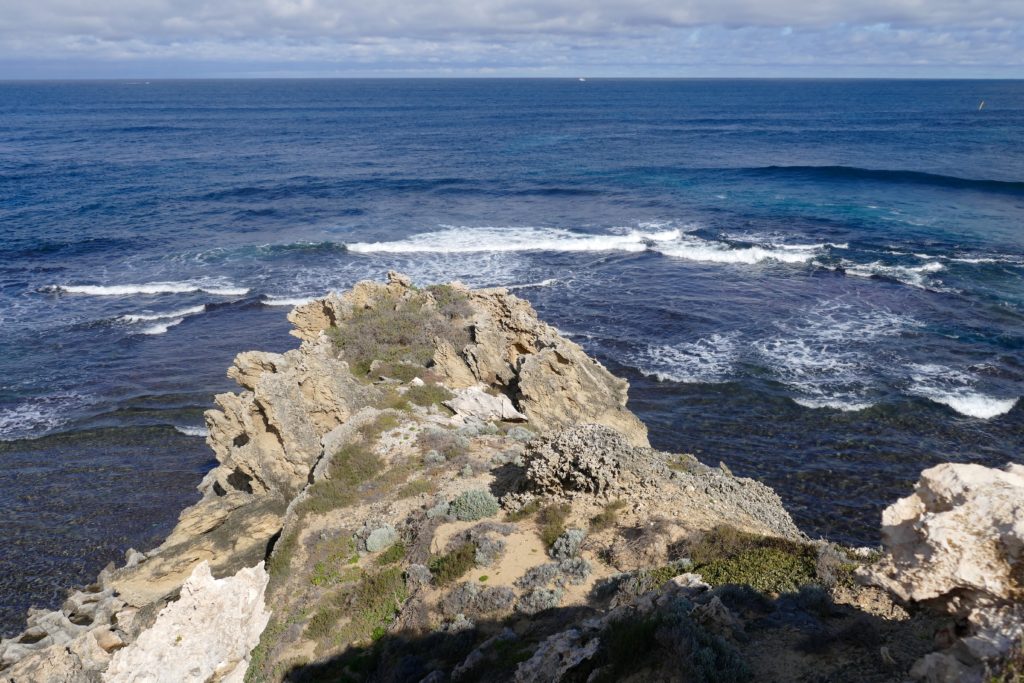
The wildest/most splendid part of Rotto’s shoreline is generally – and accurately – known as West End.
More formally, it is Cape Vlamingh.

South from here, Antarctica is the nearest substantial landmass.
West, it is Africa.
Half an hour away is another world altogether: downtown, Thomson Bay.
On a summer day, we would have queued for who knows how long to obtain our beers (excellent – from a decent selection of real beers…the “oil refinery” kind are also available) which we would have consumed in the midst of a loud throng of many hundreds, overlooking the many hundreds of boats, clogging Thomson Bay.
This winter’s day we were two of eight people sitting outside, with fewer than twenty inside…and the only boat in front of the hotel was casting off.
It may or may not have belonged to comedian Kevin “bloody” Wilson, but the boat was named after his signature song.
If you are mystified, Google for Dilligaf!
